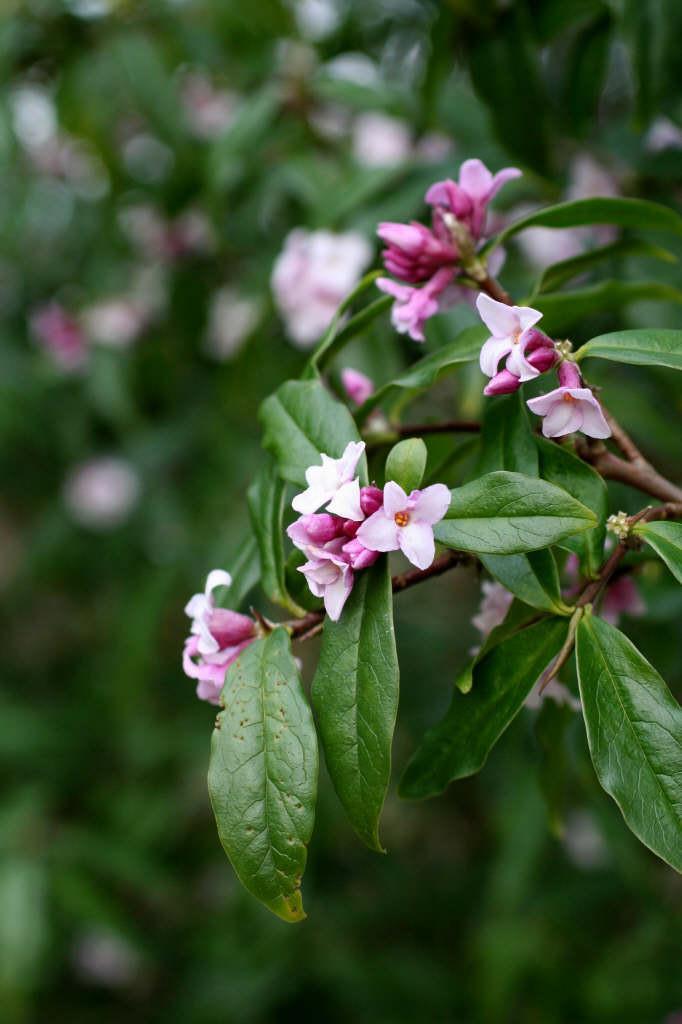Daphne bholua 'Jacqueline Postill'
daphne 'Jacqueline Postill'
An upright, medium-sized, evergreen shrub with leathery, oblanceolate dark green leaves. Highly fragrant purplish-pink and white flowers in terminal clusters appear in late winter, followed by black berries
Size
Ultimate height
1.5–2.5 metresTime to ultimate height
10–20 yearsUltimate spread
1–1.5 metresGrowing conditions
Moisture
Moist but well–drained, Well–drainedpH
Alkaline, NeutralColour & scent
| Stem | Flower | Foliage | Fruit | |
| Spring | Green | |||
|---|---|---|---|---|
| Summer | Green | Black | ||
| Autumn | Green | |||
| Winter | Purple Pink White | Green |
Position
- Full sun
- Partial shade
Aspect
South–facing or West–facing
Exposure
Sheltered Hardiness
H4Botanical details
- Family
- Thymelaeaceae
- Native to GB / Ireland
- No
- Foliage
- Evergreen
- Habit
- Bushy
- Potentially harmful
- TOXIC if eaten, skin irritant. Wear gloves and other protective equipment when handling TOXIC to pets - see the HTA guide to potentially harmful plants for further information and useful contact numbers
- Genus
Daphne can be deciduous or evergreen shrubs with small, usually very fragrant tubular, 4-lobed flowers, often followed by colourful berries
- Name status
Accepted
How to grow
Cultivation
Grow in fertile, moist but well-drained soils. Not reliably hardy in exposed conditions. Resents transplanting
Propagation
Propagate by semi-hardwood cuttings or grafting
Suggested planting locations and garden types
- Cottage and informal garden
- Flower borders and beds
Pruning
Pests
May be susceptible to aphids
Diseases
May be susceptible to honey fungus (rarely), phytophthora root rot, fungal leaf spot and virus diseases
Get involved
The Royal Horticultural Society is the UK’s leading gardening charity. We aim to enrich everyone’s life through plants, and make the UK a greener and more beautiful place.
